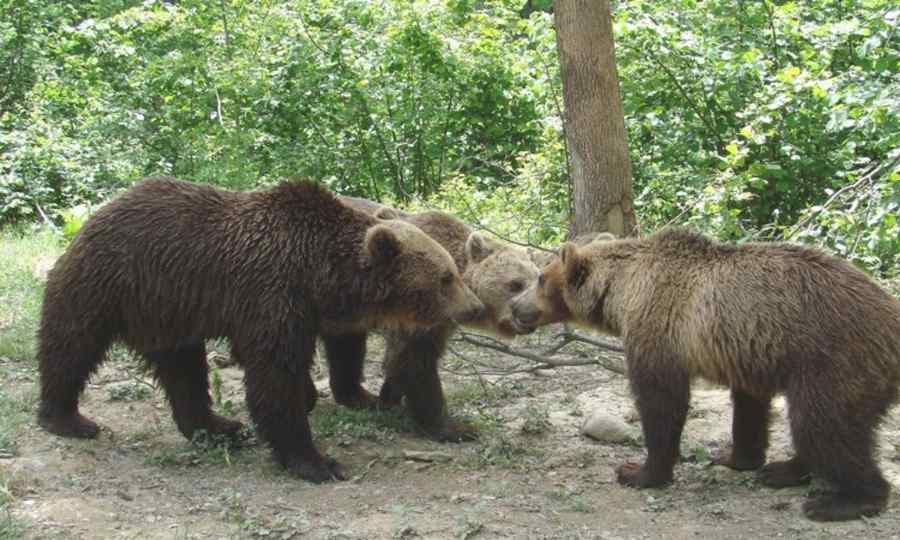Romanian bears, count after DNA

The Minister of the Environment, Water and Forests, Mircea Fechet, announced on Thursday that in Romania there are between 10,419 and 12,770 brown bears, 95% being the probability of coverage of the estimated interval, while the optimal number of copies is 4,000.
Mircea Fechet participated in a press conference dedicated to the presentation, for the first time, of the preliminary results regarding the population of brown bear in Romania within the project ‘Implementation of the National Action Plan for the Conservation of the Brown Bear Population SMIS Code 136899/319056’.
‘After analyzing over 24,000 evidence collected from 25 counties, the filmmakers estimate that in Romania live between 10,419 and 12,770 brown bears, the maximum estimated evaluation of specialists. The level of confidence for these figures, according to the methodology, is 95%. Therefore, we can say, for the first time in the history of Romania, with a solid scientific basis, how many bears we have in the forest. So far I have worked with more or less controversial estimates. These were based on visual observations or other indirect methods, but today we have a clear image, based on the DNA that we checked in each sample, « said the Minister of the Environment.
According to him, the project is one of the largest and most ambitious ever carried out in Romania.
« We hope to put Romania on the international scientific map, because it is the largest and most complex genetic study of the brown bear population ever done worldwide, » Fischet said.
The research is purely Romanian, the head of the environment said, because all the analyzes were done in the laboratory of the National Institute for Research and Development in Forestry ‘Marin Drăcea’ and the latest equipment were used, according to the highest international standards.
‘Behind these impressive results is a good mobilization because 672 hunting specialists have been involved. They had special dogs trained for collecting samples in natural and national parks. They had an application to ensure the traceability of all these tests, with GPS coordinates, with computer application. We are not just talking about a scientific research, but about a paradigm change in how we manage the population of brown bears in Romania ‘, the minister said.
Mircea Fechet stressed that it was also made a national zoning of the management of the brown bear population and divided the territory of Romania into four distinct categories.
‘We will have key areas for preservation where there will be no intervention on the population of brown bear. We will have conflict management areas or risk areas, sustainable management and marginal areas. There will be places where the bear has nothing to do, just as there will be places where the bear will be left alone because it will be at home, « said the Minister of the Environment.
In this context, the ministry is to complete the long -term genetic monitoring plan.
‘We will approve by an order of minister, most likely, the normative act until the end of this year in relation to the zoning to which I referred earlier. However, my conclusion is that this study opens a new stage in the management of the brown bear population and I hope it will be a balance between conservation, on the one hand, and the safety of citizens, between biodiversity protection and the interest of local communities, « Fechet said.
He added that Romania has the largest brown bear population in Europe.
« We are also champions about how we evaluate all these figures, but especially in the light of this number that many may have suspected, there are many resorts where bears have become an almost daily presence, » said the official.
As a result, says the minister, the authorities are forced to take intervention measures.
‘All specialist colleagues say that the optimal number for the bear population in Romania is somewhere around 4,000. Of course, we do not start to take measures to reduce the brown bear population overnight. Next we are interested in the conservation status of the species, but we are more interested in the safety of the citizens’, explained the Minister of the Environment.
He stated that he will propose the modification of the Ordinance 81/2021 regarding the approval of the immediate intervention methods to prevent and combat the attacks of brown bear specimens on their persons and goods.
‘The proposal is that in the town of the locality we eliminate the gradual intervention. Today, before making a decision that really protects the population, the mayor is first obliged to chase the bear, after which he will try a relocation and only then has the right, according to the law, to shoot the bear or to euthanize it. I will leave freedom to the representatives of the local public authorities, the mayors, to make the decision that they appreciate that they would be correct in relation to the situation they face from the respective locality ‘, said Mircea Fechet.
At the same time, the bureaucratic process will be simplified in this regard.
‘In 2025, we can make faster decisions using phone, WhatsApp groups or other communications applications, SMS, any other tool that allows a quick, efficient decision, because human life always has priority. Nothing can be more important than life, « said the minister.
On Thursday, for the first time the preliminary results regarding the population of brown bear in Romania were presented within the project ‘Implementation of the National Action Plan for the Conservation of the Brunt Bear Population of Romania SMIS code 136899/319056’. The beneficiary of the project is the Ministry of Environment, Water and Forests, and partners: the National Institute for Research and Development in Forestry ‘Marin Drăcea’, the local public director of Kronstadt Brașov forests and the National Forest Administration-RNP Romsilva.
The data of the study presented were obtained based on the results of the analyzes of the genetic tests, the genetic diversity and the population structure of the brown bear species in our country. 24,056 samples at the level of hunting funds and national parks were collected. Each bear is identified by a unique genetic profile, obtained by analyzing 16 DNA markers.
The study was based on the following information: the results of the distribution and analyzes of the bear genetic samples, collected at national level from 2022 – 2025; the results of previous studies regarding the conservation and management of the brown bear species at national and regional level; official estimates, at the level of hunting funds (2002 – 2024); The damage caused by the bear in 2017 – 2023; The incidents of the human being from 2005-2024; Calls 112 from 2016 – 2024; locations of bears monitored with GPS system; the bonus of hunting funds; maps and information on protected natural areas; the forest fund; agricultural areas and other areas with vegetation; urban and tourist areas, etc.
The total budget of the project is 57.3 million lei, and the period of implementation in two stages: July 2021 – December 2023 and January 2024 – December 2025.








